Washington Examiner reporters and staff were inside and outside the Capitol building on Wednesday when a protest against the congressional acceptance of Electoral College votes making Joe Biden the president-elect rather than President Trump turned into a mob that breached the building and forced lawmakers and staff on Capitol Hill into lockdown for hours.
Here is a portion of what they saw and heard.
GRAEME JENNINGS, outside: I was covering the west front of the Capitol as the protesters advanced up to the west side steps. The mob took over the inauguration platform and clashed with a small number of police officers in riot gear. Police fired tear gas and pepper spray, but the mob charged through them and attacked. The mob then proceeded further up the west front of the Capitol until people eventually broke into the building. It was a complete security failure on the part of the United States Capitol Police.
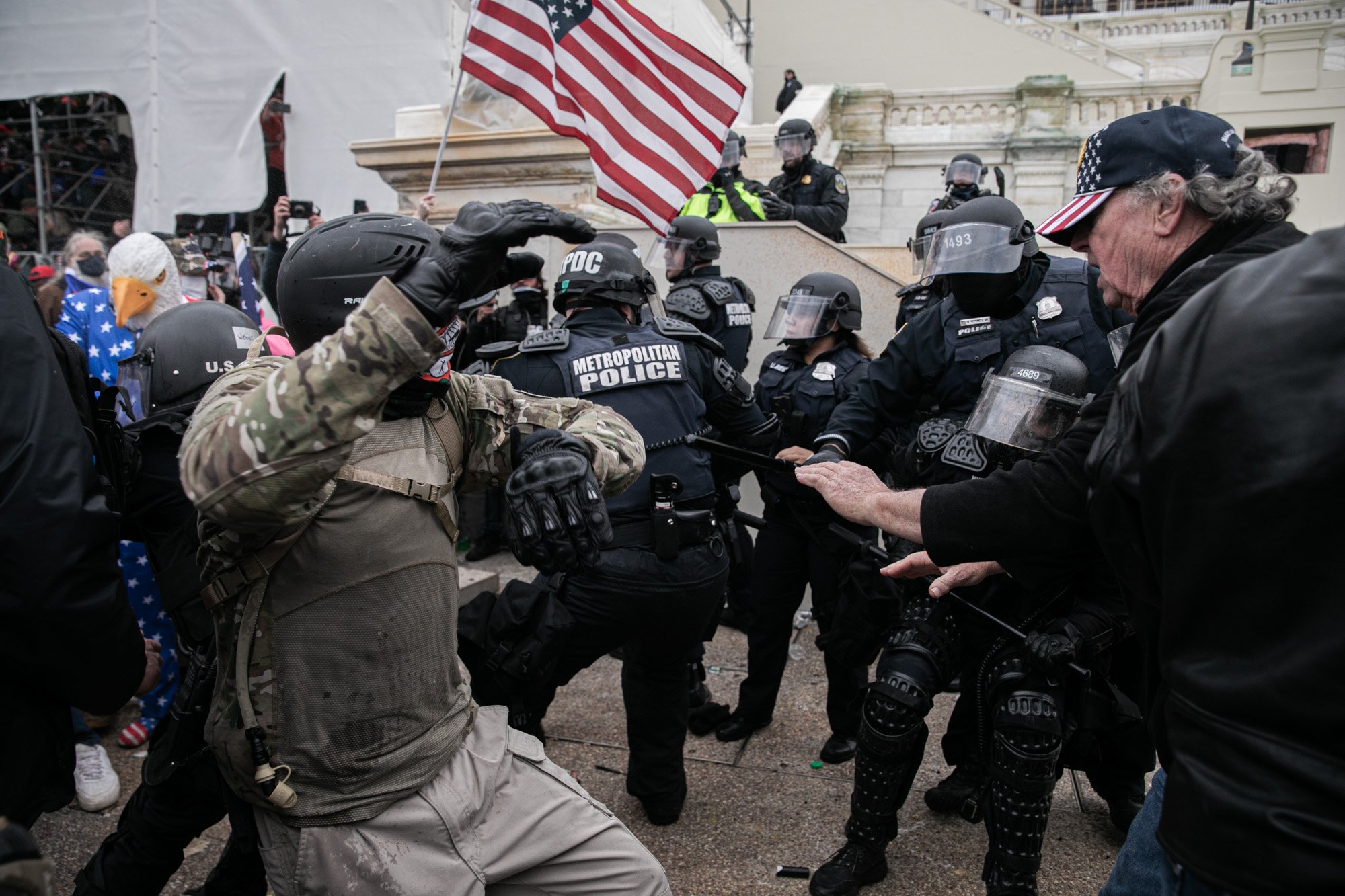
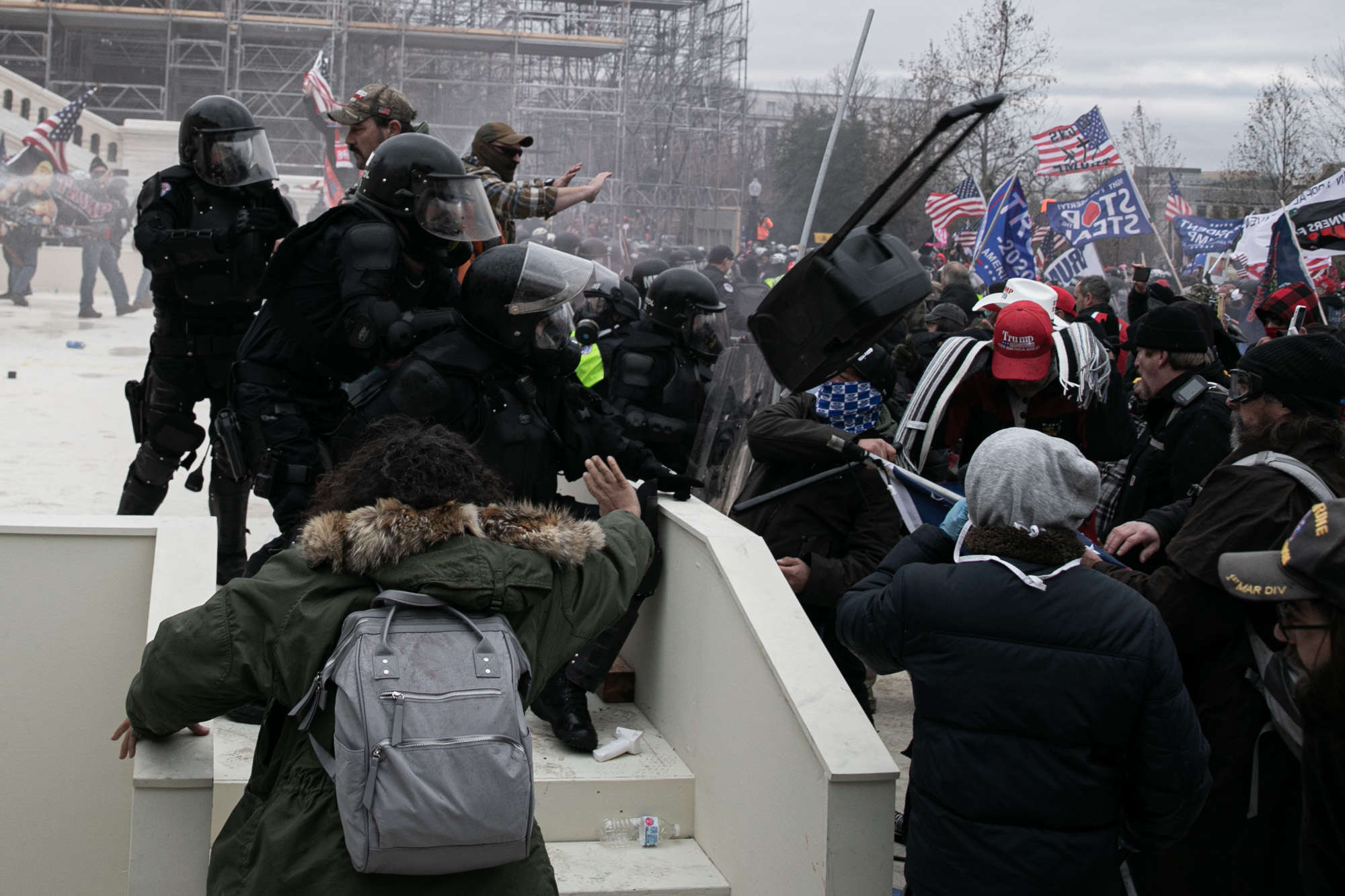
KERRY PICKET, inside: Lawmakers reconvened on the House floor to resume debate over the contest of Arizona’s electoral votes at 1:45 p.m. Arizona Republican Rep. Paul Gosar stood to make his remarks on his objection to his state’s electoral votes certification, but he paused midspeech after hearing loud noises from outside the chamber. Seemingly befuddled, Gosar stopped his remarks altogether.
“The House will be in order,” the chairman repeatedly said as voices from the floor yelled for the doors of the chamber to be locked. The chairman announced the House would go into recess.
The sergeant-at-arms walked to the middle of the House floor and announced a breach in the Capitol had happened and that tear gas was deployed around the building. Lawmakers were instructed to get the gas masks located underneath their chairs and remove them from their packaging.
Capitol Police entered the chamber through the press gallery and gave each correspondent a staff-issued gas mask pack to tear open, a feat several reporters found to be relatively difficult due to the packaging’s durable material.
Lawmakers and reporters, wearing the plastic hood-like gas masks, were shuffled to the west side of the chamber’s gallery, where visitors sit, and were instructed by law enforcement to lie on the ground or remain as low as possible.
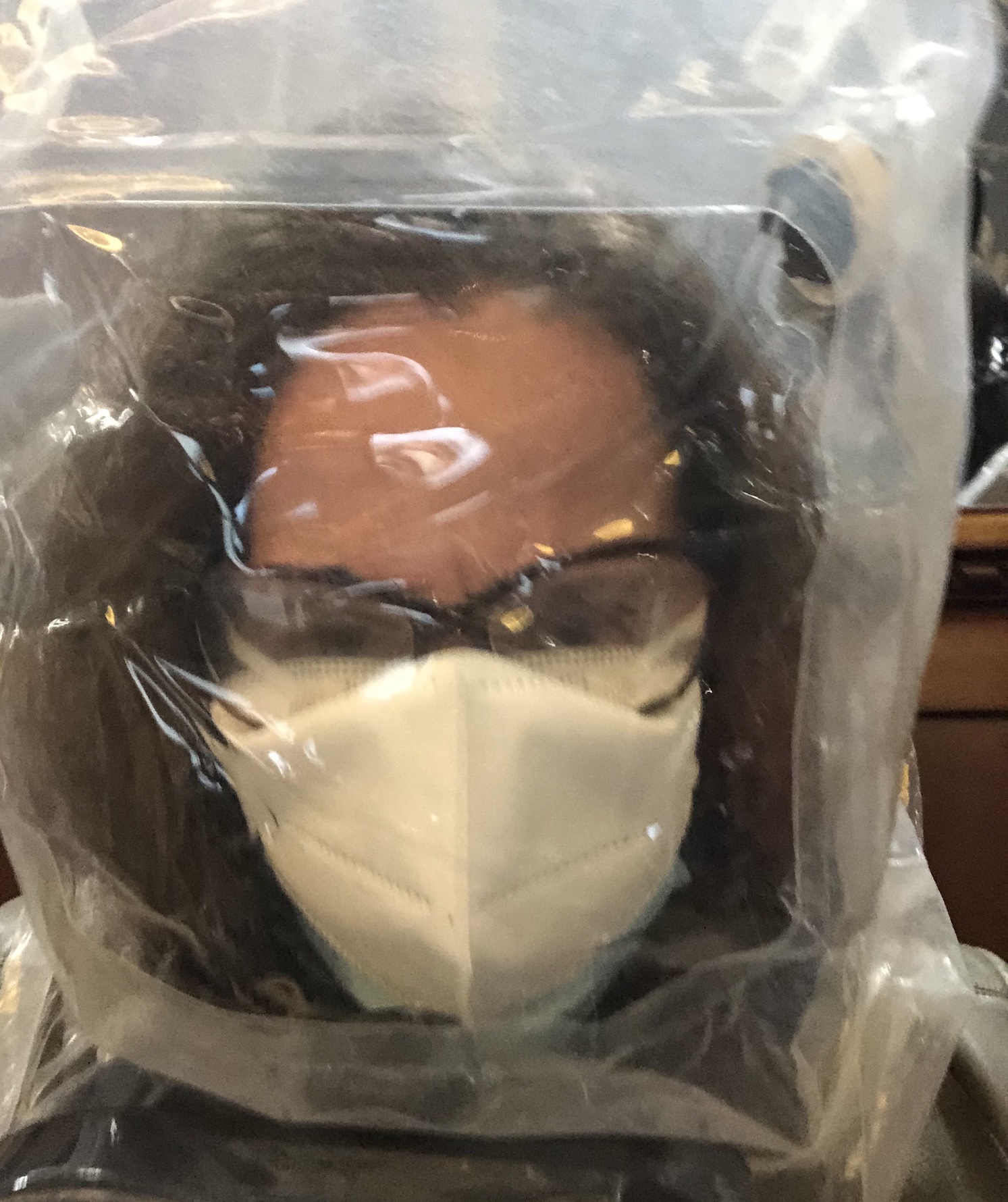
Bang! A shot was heard from outside the chamber as everyone remained huddled low together in the gallery. One lawmaker could be seen praying while Rep. Mike Quigley, an Illinois Democrat and Intelligence Committee member, was on his phone describing the events as they happened.
Rep. Steve Cohen, a Tennessee Democrat who sat in the visitors’ gallery on the east side of the floor, yelled to the Republicans, “Tell Trump to call your people off!”
Capitol Police scurried on the House floor while the chamber doors were pounded on. At this point, lawmakers and reporters were led out of the House gallery by the Capitol Police to the second floor, where scads of people were lying on their stomachs outside the House floor.
“Keep moving! No photos! No videos!” Capitol Police reminded staff and reporters walking through the “no photo” zone of the complex with lawmakers, still wearing the plastic hood gas masks. Taken into the subbasement of the Capitol, the group was led through a back tunnel that led everyone to the Longworth House Office Building.
Lawmakers resided in a committee hearing room or went to their offices to lock down. Reporters were sent to a cafeteria in the building to wait until the Capitol was secured. By 7 p.m., House Speaker Nancy Pelosi and Senate Minority Leader Chuck Schumer announced that Congress would resume its operations. Reporters returned to the Capitol by 7:30 p.m.
EMILY BROOKS, inside: I was in a basement media workspace in the Capitol Visitor Center, a sort of annex where there is also a studio for press conferences. It felt safe since it was an area that was far away from the chamber, down a long hallway, and through two sets of double doors.
After watching news coverage of intruders in the House and Senate chambers, I took a look outside the first set of double doors and saw a few groups of police officers coming from a tunnel to Cannon House Office Building and through the set of double doors at the end of a long hallway, and I could hear some officers on the other side yelling at intruders. Before I could get to the door, two officers came through the doors toward me and told me to go back.
One officer was helping guide the other and asked if I had water. I did, and I ran back to get my water bottle. They followed me, and I gave it to them. The other officer, he said, had gotten pepper-sprayed in the face by one of the intruders. The injured officer poured the water in his eyes over a trash can outside the media workspace as the four other reporters in the room and I watched.
One officer asked us if the doors to our room lock. They didn’t.
Later, four of us reporters decided to take a peek outside the double doors again. We saw at least one person appearing to be arrested.
After things died down, I saw officers guarding the spot where a person was earlier arrested and chatting. A small American flag, some reusable water bottles, and gloves were on the ground. One officer told me that some of the intruders had filled socks with metal objects such as batteries and swung them at officers’ heads and that there were a lot of head injuries.
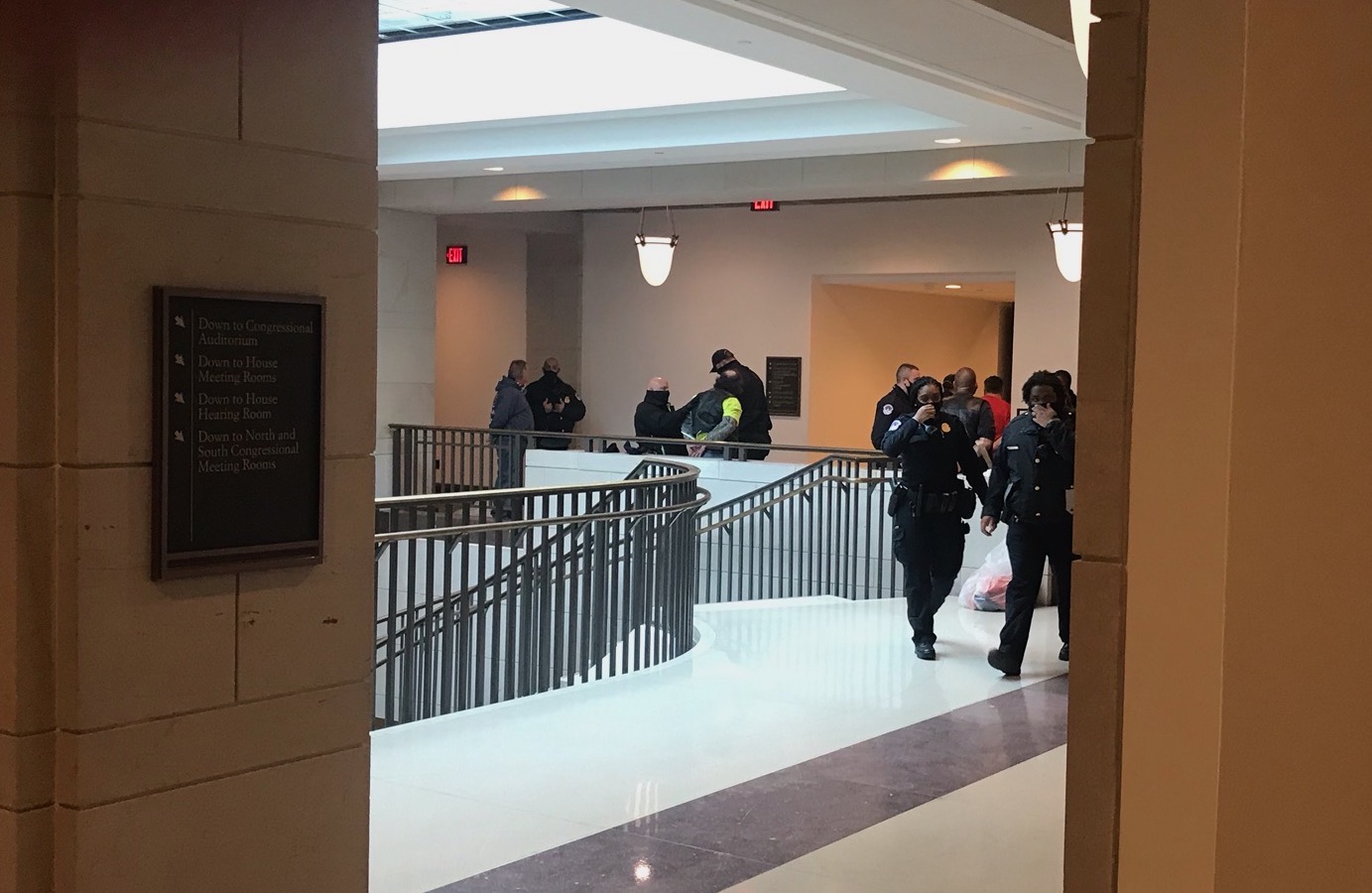
WILL RICCIARDELLA, outside: By 6 a.m., the streets were flooded with rallygoers. The crowd was composed of people of all ages and races, with nearly equal numbers of men and women. I saw elderly people with canes and walkers, even some with scooters, making their way to their seats. By 10 a.m., the number of people who arrived was hard to fathom. They filled the ellipse in President’s Park, the street adjacent to it, and the lawn in front of the Washington Monument.
Murmurs among the crowd were peaceful, with people who felt as though their voices weren’t being heard or being taken seriously. Some were discussing the march to the Capitol later in the day, which wasn’t a secret. Chants of “U.S.A.” and “stop the steal” would spontaneously break out. Frustrations with the government and media ran high.
After Trump spoke, the crowd made its way to the Capitol. I was well behind those who breached the Capitol and made my way toward the building around 3:30 p.m. I’m not an investigator and don’t have a trained eye, but I did not see antifa, Black Lives Matter activists, or other agitators in the crowd. The vast majority were peaceful. As I walked up to the building, there was not a police officer in sight, just thousands of Trump supporters who had taken complete control of the setup for Biden’s inauguration.
The crowd focused its ire on the Capitol building. I did not see any violence, fights, or heated conversations anywhere around the Capitol building when I arrived. I pushed through crowds unmolested to get video footage of the events.
There was nothing law enforcement could do for hours. Chants of “the citizens will no longer comply” broke out. Many were concerned about the woman who was shot. Some were expressing that maybe now people will listen. A small group chanted, “No Trump, no peace,” on the east side of the building.
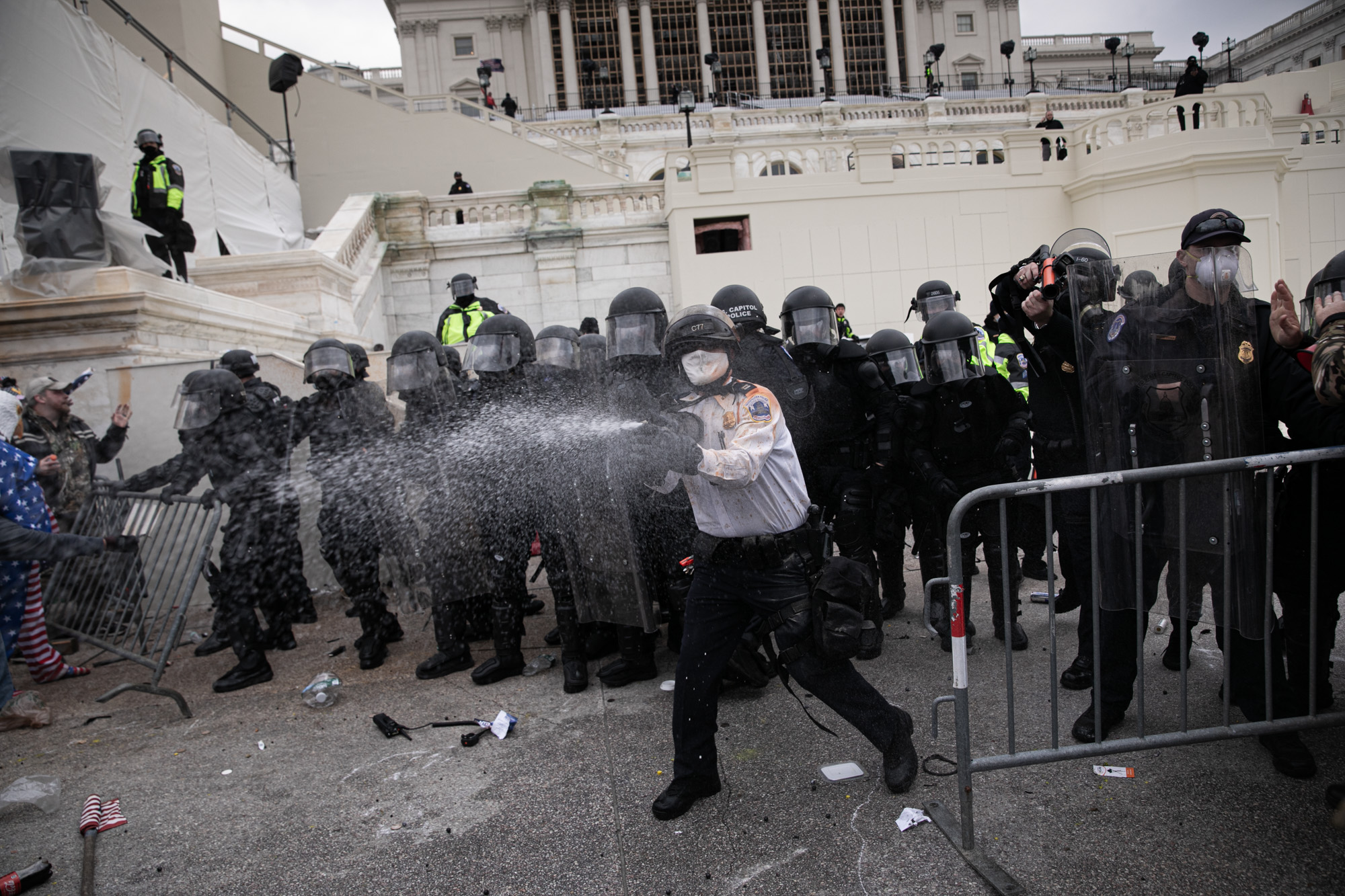
ZACHARY HALASCHAK, outside: At about 4:30 p.m., demonstrators were still clamoring all over the outside of the Capitol building, and there was a line of police with riot gear near the top on the stairs. The atmosphere was angry but also a bit festive. One man on a loudspeaker was reading out Trump’s tweets telling the demonstrators to go home, but no one reacted by doing so. One man shouted back: “I’m sick of hearing that garbage.”
Around 5 p.m. is when things on the Capitol steps began to change. Police began pushing the demonstrators back, and they began pushing back in turn, causing law enforcement to use crowd-control equipment such as tear gas, which quickly resulted in people running. Demonstrators were shouting back at the police, calling them “pigs” and repeatedly berating them for the fatal shooting of one of the Capitol building rioters earlier that day.
When curfew rolled around at 6 p.m., FBI members in tactical gear showed up to bolster the law enforcement perimeter, which grew slowly but steadily over the next half-hour, pushing the perimeter back further away from the Capitol and establishing a solid defense around the building. Some of the protesters continued to taunt and mock the officers.

